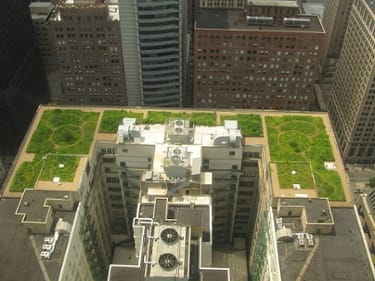Green Infrastructure Series: Chicago
12/22/2016
One inch of rainfall in Chicago generates about 4 billion gallons of stormwater, 60% of which is likely running off the paved and covered surfaces. Like NYC, Chicago is on a combined sewer system, and excess stormwater entering the system can result in basement flooding, backflow of water, and combined sewer overflow (CSO). A CSO event in Chicago can happen with as little as 2/3 inch of rain, occuring on average approximately once a week. Protection of the waterways is important for Chicago with two dozen public beaches and a wide variety of water-based recreation on the Chicago River and Lake Michigan.

Chicago is halfway through a five-year plan to spend $50 million on green infrastructure to create 10 million gallons of stormwater storage, reducing stormwater runoff by up to 250 million gallons a year. Already, Chicago has implemented successful strategies, such as the Stormwater Ordinance (regulated developments require a stormwater review and approval before receiving a building permit), the green roof initiative and the Green Alleys program. Even City Hall has a green roof, covering over 20,000 square feet, with 150 species of plants and saving $5,000 on utility bills. Green roofs and permeable pavers already manage 85 million gallons of stormwater each year.
Chicago is now monitoring to make sure their green infrastructure is performing as expected to prevent flooding and reduce CSO in a public-prive-higher education consortium called City Digital. The pilot project "aims to test the effectiveness of different green stormwater projects using sensors and cloud computing". By mid-2017, six pilot sites will be monitoring rainfall, soil moisture, chemical absorption and other data and will be available on Chicago's open data portal. Analysis of this data will help determine the green infrastructure's effectiveness at that location, and indicate if that site is better suited for a bioswale or permeable pavers, for instance.
On the advocacy side, Friends of the Chicago River, a non-profit solely dedicated to the Chicago River system, started an Overflow Action Day alert system, where subsribers will get an email reminder to conserve water before and during a rain event. Their "Super Easy Action Day Duties" are: take quicker showers, wash clothes less often and flush less. They also encourage small-scale green infrastructure projects on your home, like a rain barrel or rain garden. Or visit istheresewageinthechicagoriver.com to see if a CSO event is happening in real time, or see the history of CSOs into the Chicago River.
